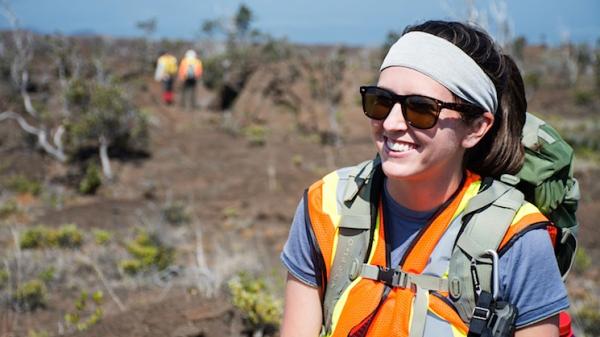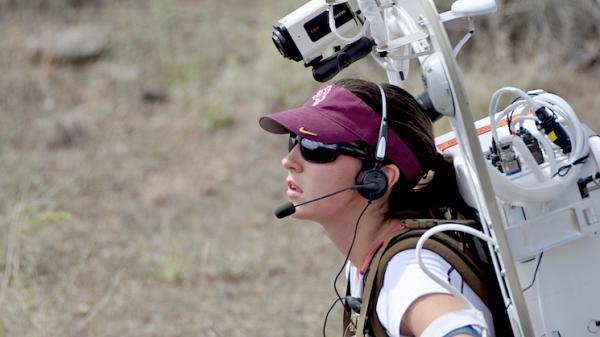When SESE Alumna Kelsey Young was just ten years old, her dad took her on a hiking trip to Zion National Park in Utah. Kelsey recalls it only taking a few minutes of hiking for her to be completely hooked on geology and nature, and so began her love of Earth and space science.
During her time at SESE, she continued to nurture this passion for geology and to uncover a parallel dedication to space.
Today, it is her seminal devotion to exploration that has propelled her into her current postdoctoral position in handheld instrumentation for the exploration of Earth, the Moon, Mars, and asteroids at NASA Goddard Space Flight Center.
While she was chairing a review panel, we had a chance to virtually “sit-down” with Kelsey and ask her a few questions about her connection to, and experience in, the world of Earth and space exploration. Here’s what she had to say:
SESE: I saw you earned a degree in geological science. What year did you graduate and what made you choose ASU?
Young: I got my PhD in Geological Sciences from ASU in 2014. I chose SESE because of the incredible range of opportunities available to students in the department. I also really liked SESE’s policy that each Ph.D. student must complete two different projects during their time in the school. SESE clearly values the interdisciplinary approach to education, and that was something that was really important to me coming into graduate school.
SESE: When you were growing up, what drew you towards earth and space science? Are there any special memories that incited your love of science?
Young: I’ve always been interested in the outdoors, even as a kid. My dad used to take my sister and me on hiking trips every summer out west and I think that’s where my love of geology came from. I remember the first of those trips, when I was 10, where my dad took us on our first big hike out at Zion National Park. I was nervous the whole way there and I was complaining because I was tired. Ten minutes into the hike, though, and I was completely hooked. I’ve been hiking ever since. My family still takes those trips, though now my dad and sister are treated to a lot more geology knowledge during our hikes! My time in undergrad and at ASU also cultivated my love of space science, as I discovered my passion for linking what I had always seen outdoors hiking with my family to what we can see on the surfaces of other planets. It’s this analog approach to planetary science that has become the focus of my career.
SESE: Is there a particular faculty member at ASU who was influential and in what way?
Young: One of the reasons I loved SESE so much was the incredible group of faculty in the school. The diverse group of professors there really enabled me to explore so many different, multi-disciplinary projects. Kip Hodges, Sri Saripalli, Phil Christensen, and so many more taught me that I didn’t have to focus on just one thing, but that it can be even more valuable to pursue a wide range of academic interests.
SESE: What was the toughest/most challenging part of your SESE/ASU experience?
Young: Honestly I think that distilling down all of the diverse opportunities available in SESE into a cohesive research plan was both challenging and exciting. It was really enjoyable, but at some times overwhelming, to sift through all of the faculty members’ interests and research opportunities to determine what I actually wanted to focus on during my time at ASU, and which of those research topics would end up in my dissertation.
SESE: What advice do you have for students who may be following your path?
Young: The biggest piece of advice I have would be to diversify your interests and follow what you’re truly interested in researching. If you say to yourself “my research so far is interesting but I’d also like to spend some time doing this other exciting project,” then don’t hesitate to do so. I know some students can be worried about splitting up their time too much and becoming involved in more than one project, but honestly that’s what made my time in SESE so rewarding, and it’s also what helped me explore what I was interested in doing after I graduated.
SESE: In terms of your successes, what were the most helpful experiences you had at ASU that assisted you along the way?
Young: What I found the most helpful starts with talking to faculty members as well as other students and researchers in the school. It was often through informal conversations that I thought of a new direction I could take my research, which often led to success. Interacting with my research group was also particularly rewarding. Connecting with the people that make SESE so dynamic was one of the most gratifying things about my time at ASU. In addition, just getting out there to try new things often led me to some of the most exciting experiences I had in SESE.

